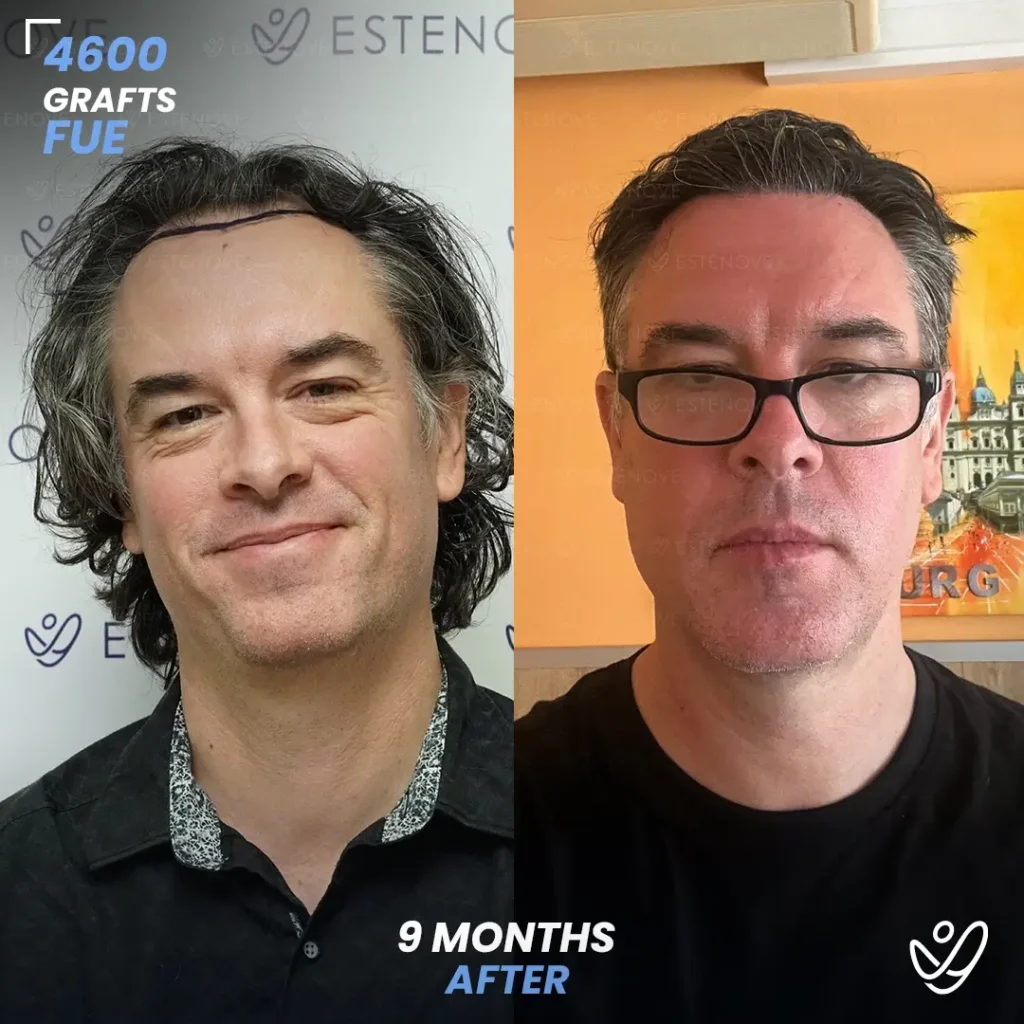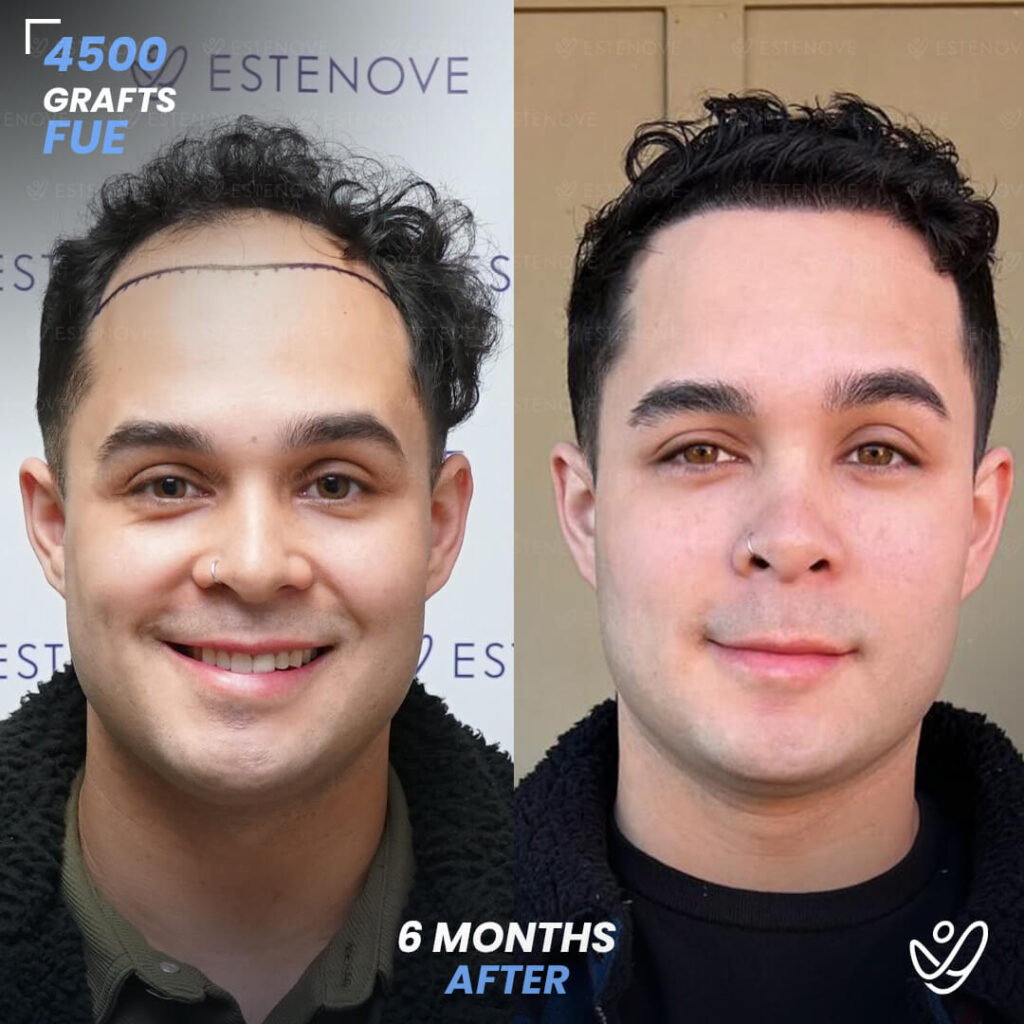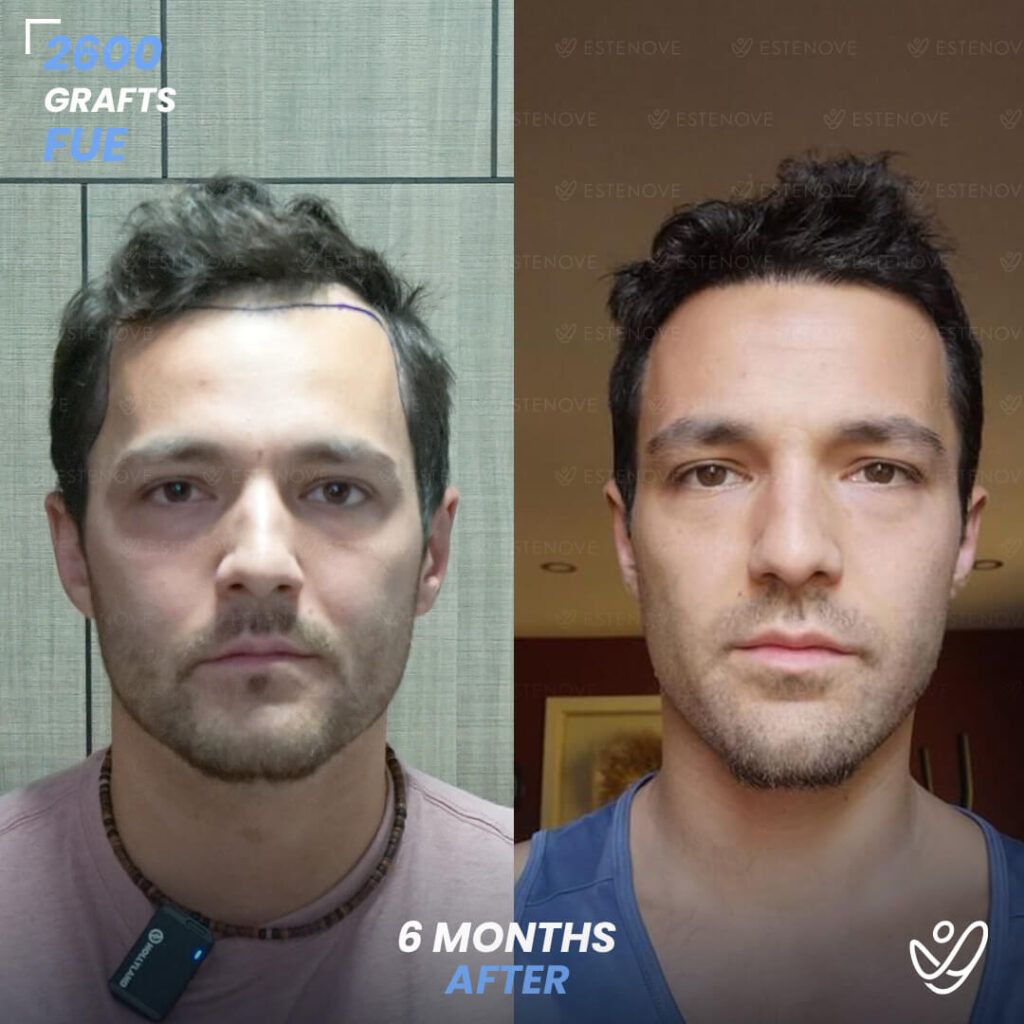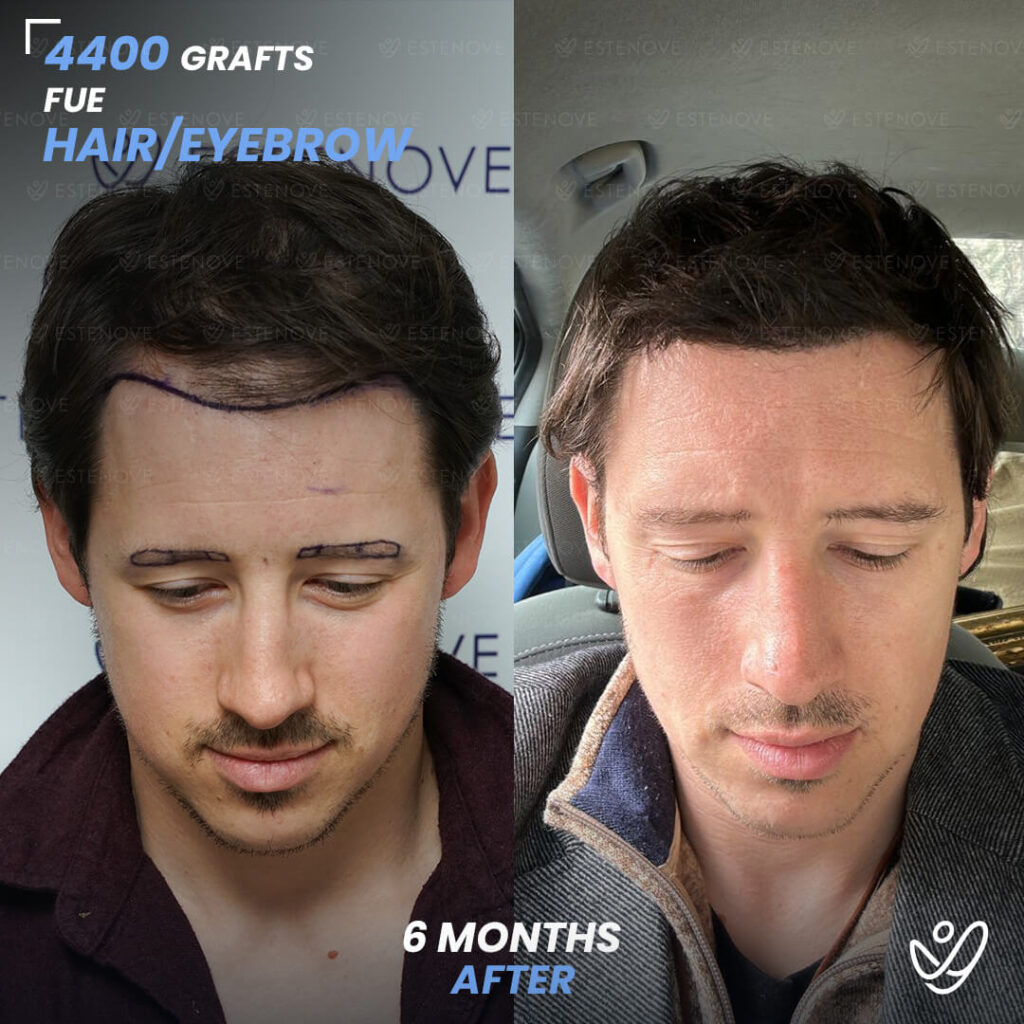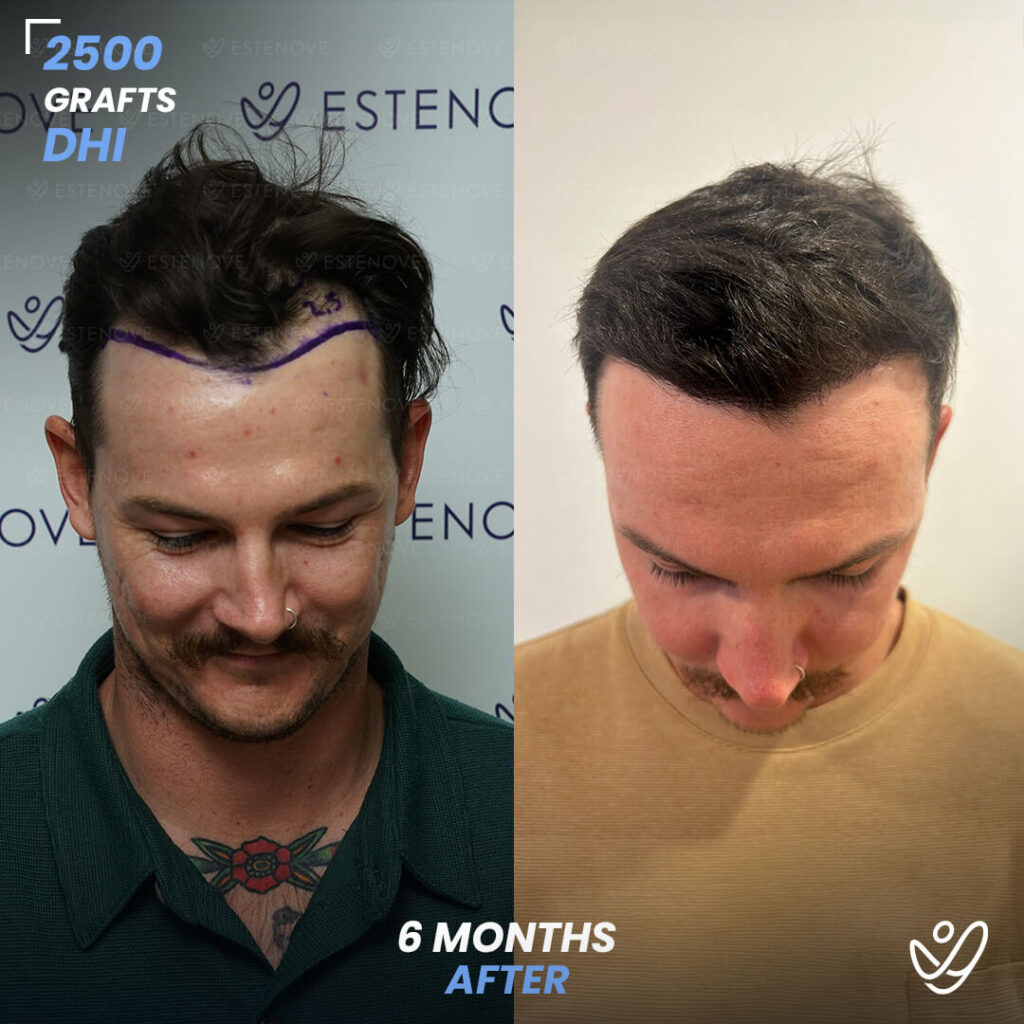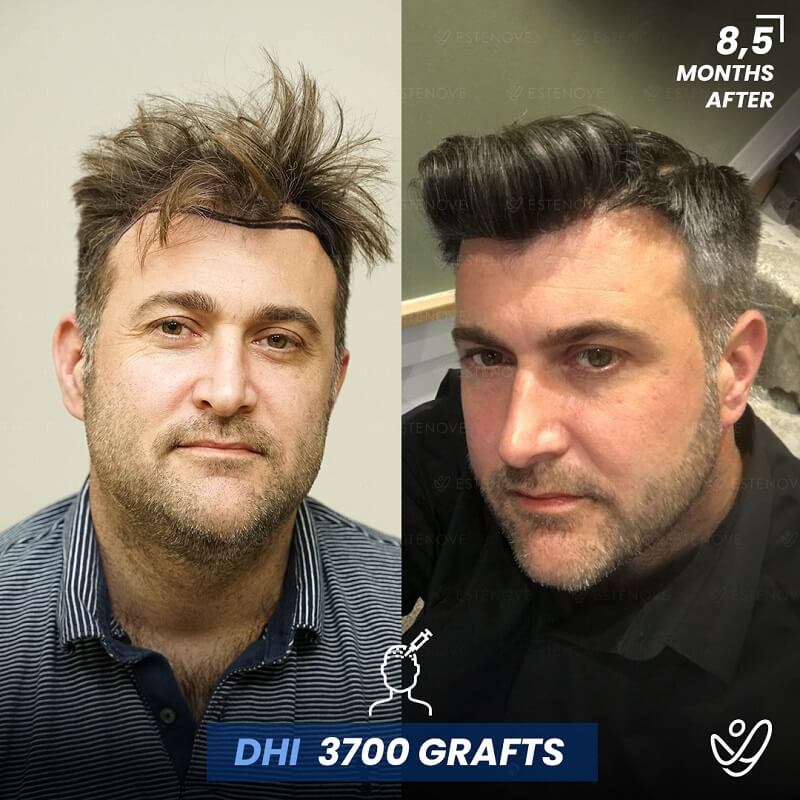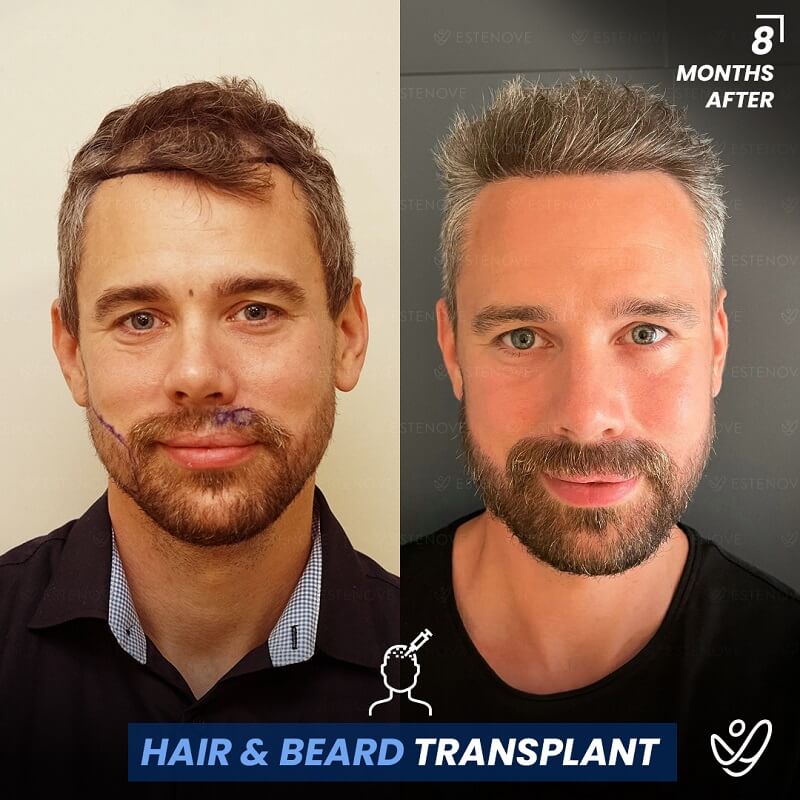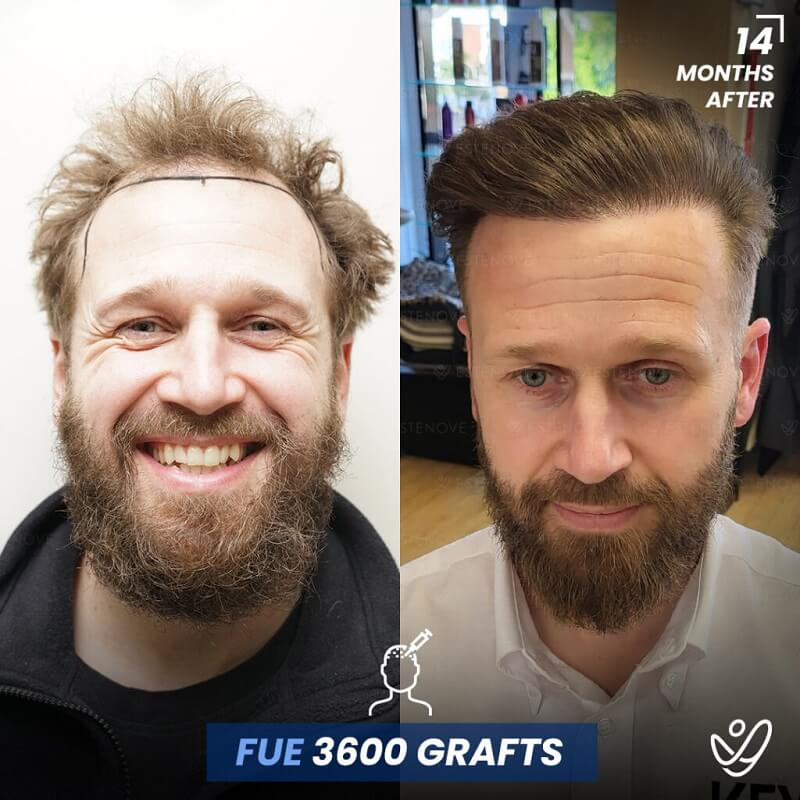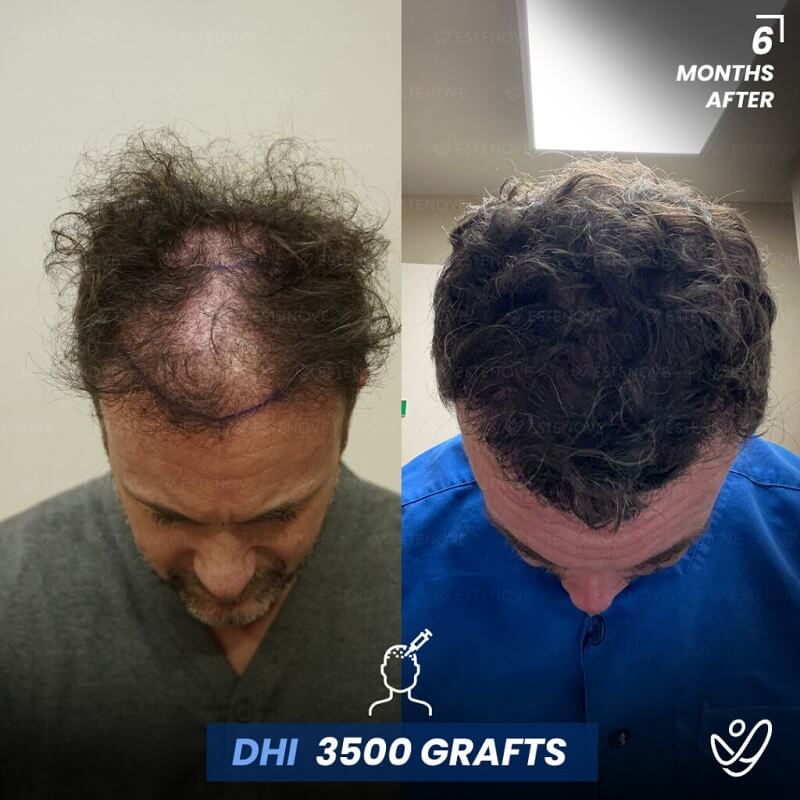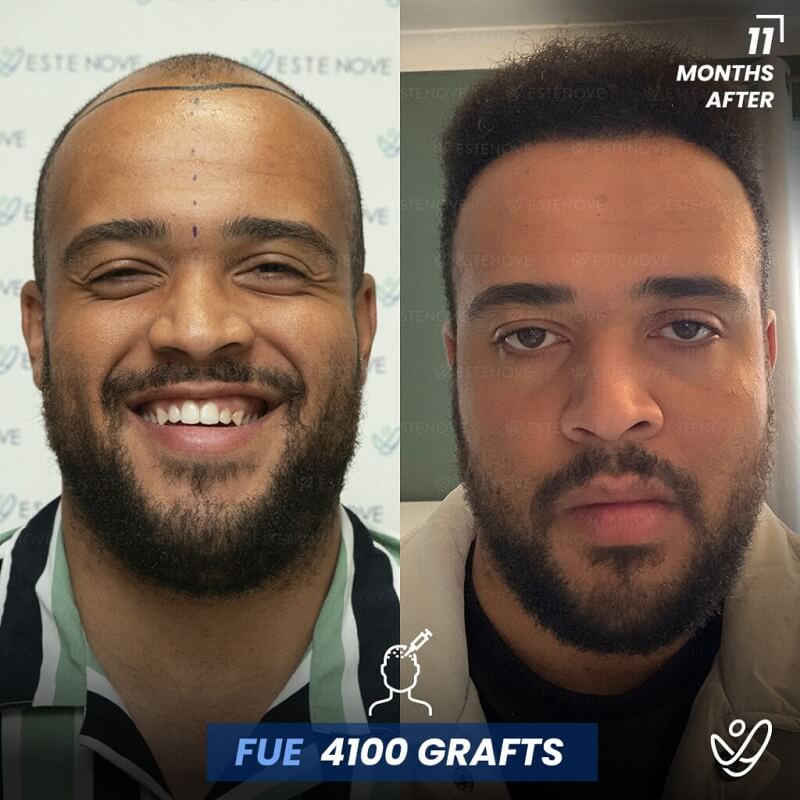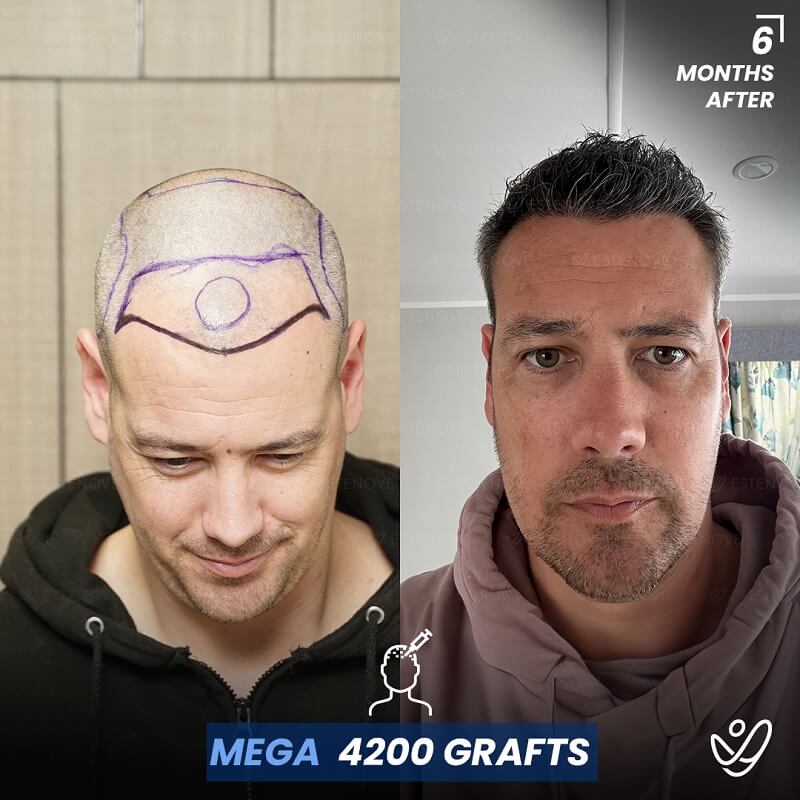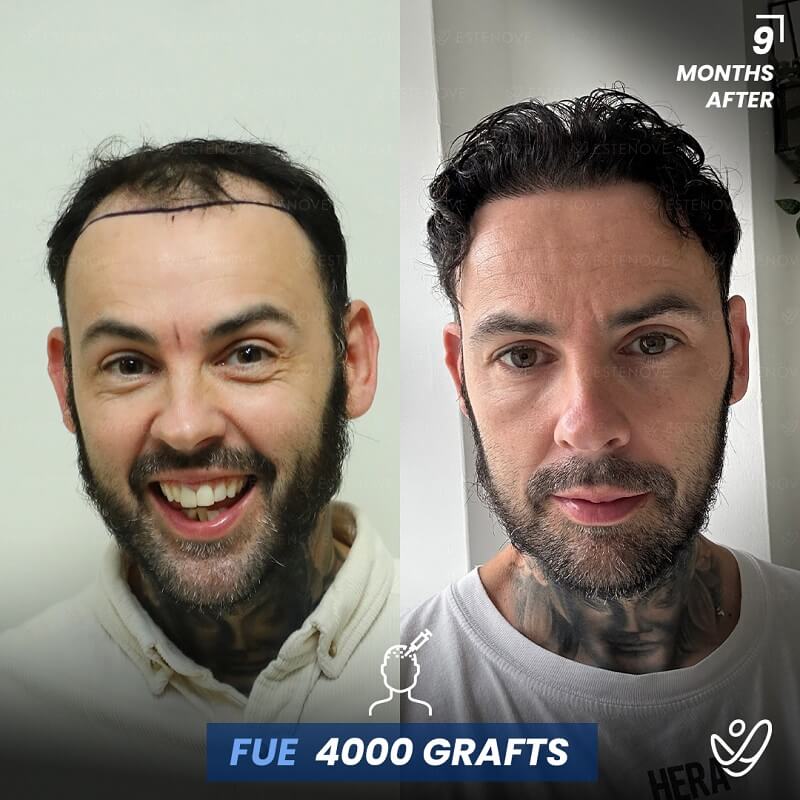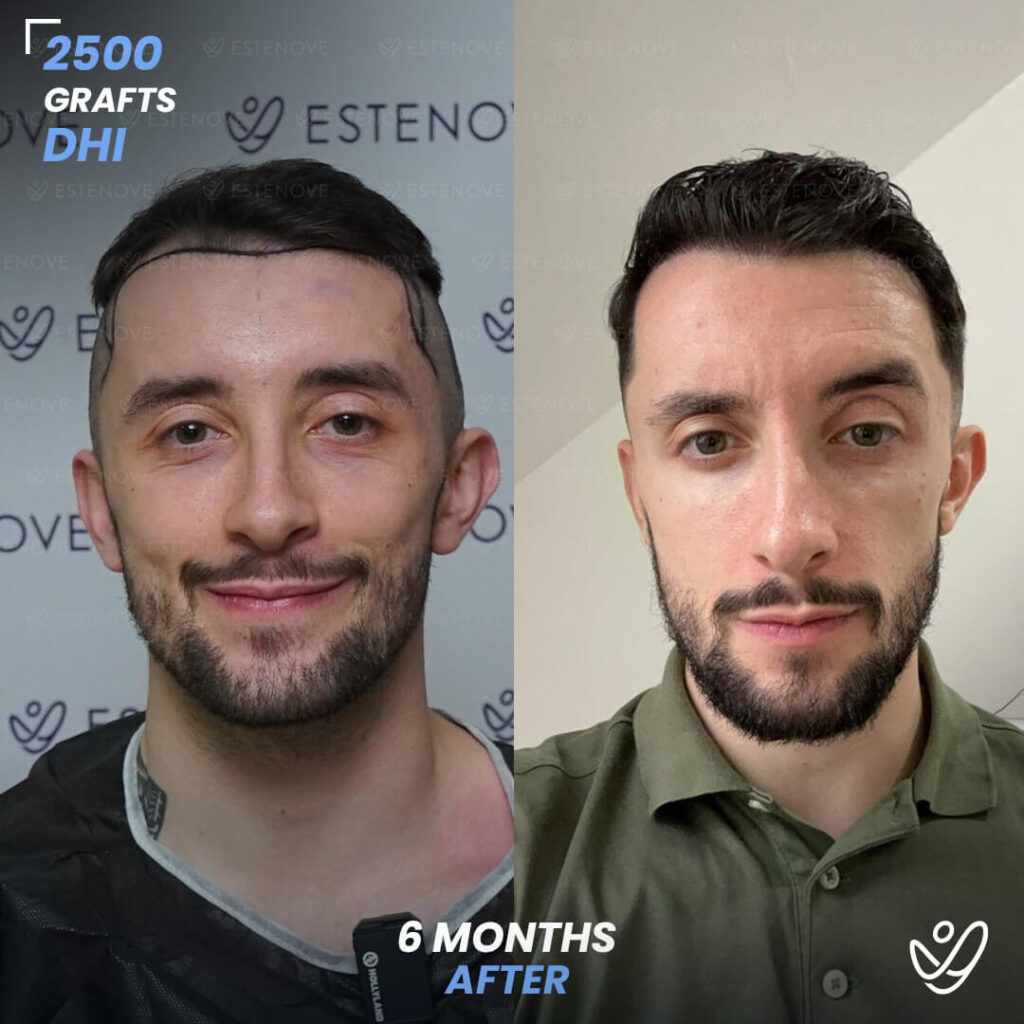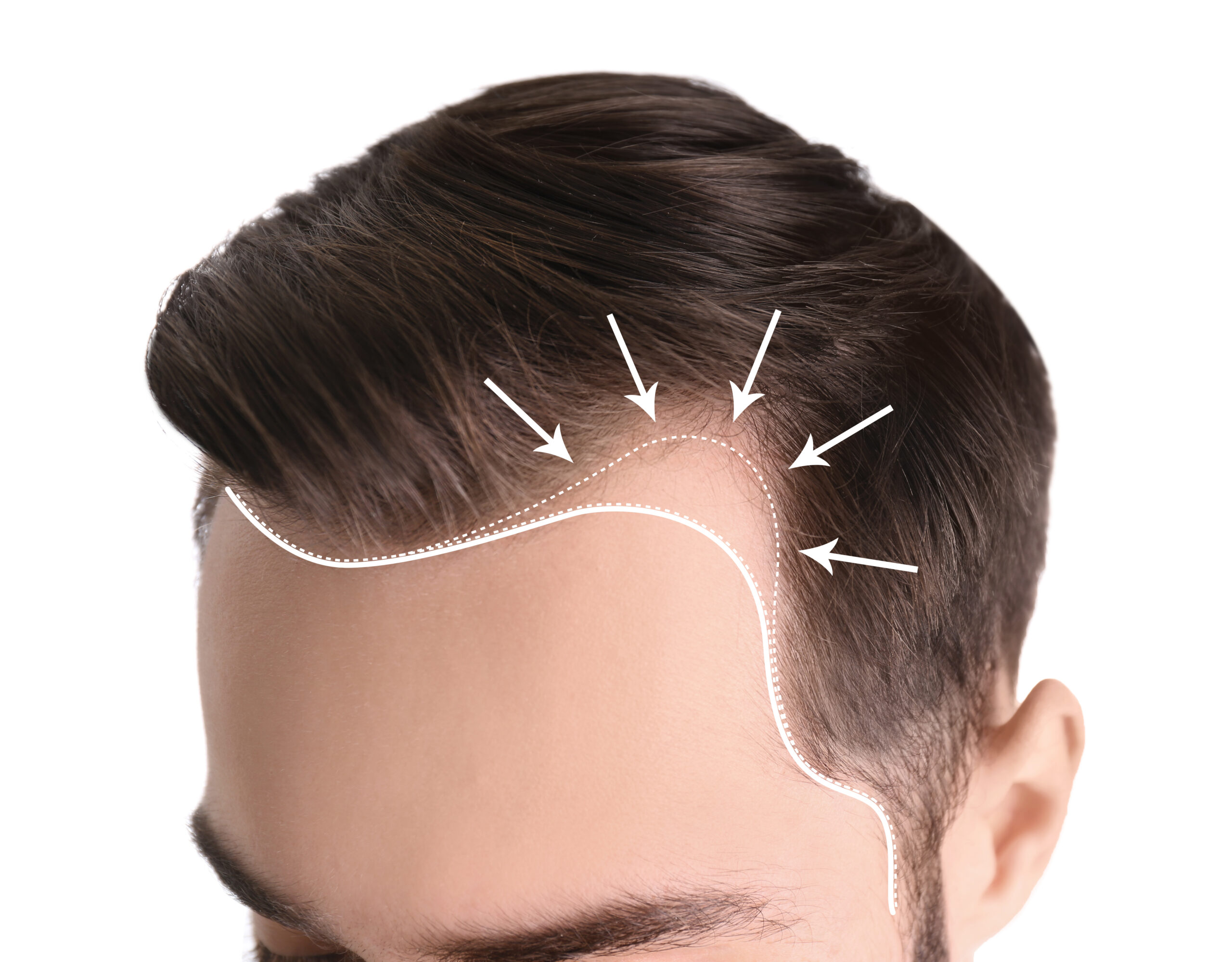
A receding hairline is one of the earliest and most noticeable signs of hair loss—affecting both men and women. Whether it’s forming an “M” shape at the temples or creating a higher forehead over time, a receding hairline can significantly affect your confidence and how you see yourself. Fortunately, there are several treatment options available in Turkey, ranging from medications to advanced hair transplant techniques.
What Is a Receding Hairline?
A receding hairline refers to hair loss that gradually moves the frontal hairline backward. This can happen symmetrically (creating an “M” or “V” shape), or more diffusely. It often affects men, but women may also experience a high, thinning hairline—especially after pregnancy or menopause.
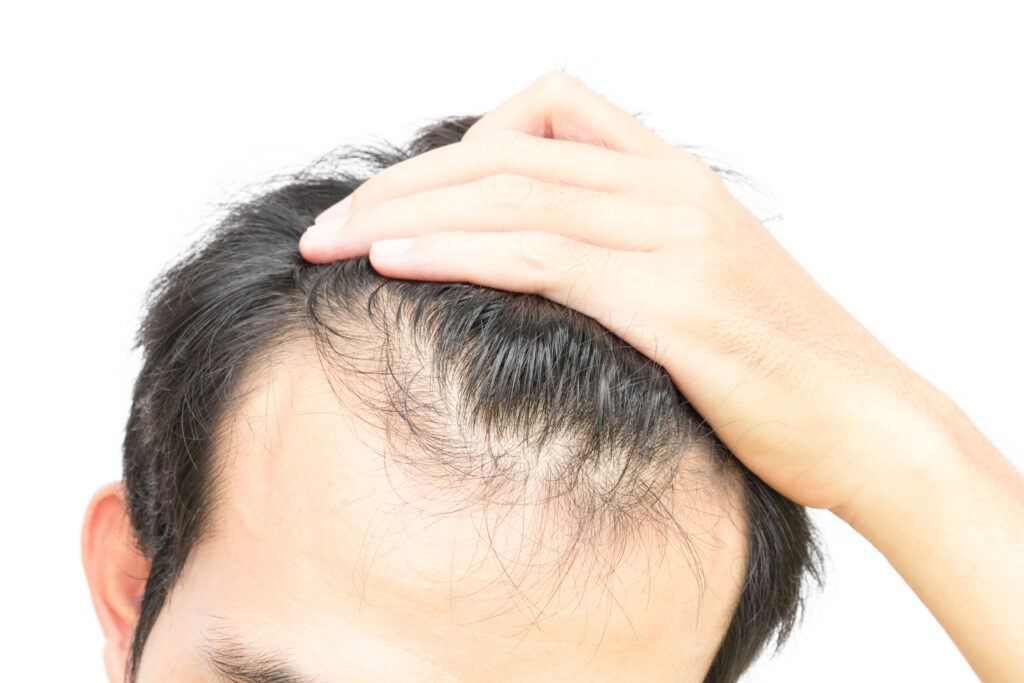
Close-up of a person pulling back hair to show early-stage receding hairline at the temples.
Early Signs & Patterns of Receding Hairline
- Visible thinning near temples or center front
- A widening forehead or changing face proportions
- Shorter, finer hairs replacing thicker strands (miniaturization)
- Emerging “M”-shaped or widow’s peak pattern
Many people search terms like “my hairline is receding” or “decreasing hairline” before realizing it’s already in progress.
What Causes Receding Hairline?
Multiple factors can contribute to a receding or recessed hairline:
- Genetics: Family history is the strongest predictor.
- Hormones: DHT (dihydrotestosterone) sensitivity affects follicle lifespan.
- Age: Natural aging weakens follicle strength over time.
- Stress: Physical or emotional stress can disrupt the growth cycle.
- Medical conditions: PCOS, anemia, thyroid disease, and alopecia areata.
- Medications: Certain blood pressure, acne, and chemotherapy drugs.
- Traction: Repeated tension from tight hairstyles (traction alopecia).
- Nutrient deficiency: Low iron, vitamin D, or zinc can exacerbate hair loss.
Diagnosis & Stages of Receding Hairline
Hairline recession often follows the Norwood Scale in men, which ranges from minimal temple recession to full frontal and crown balding. Women may experience diffuse frontal thinning or a broader part line.
Early intervention at Stage 2 or 3 offers the best chance of preserving hair and avoiding more invasive treatments later.
Can You Prevent It?
In genetically prone individuals, you can’t fully stop a receding hairline, but you can slow its progression. Use of DHT blockers like finasteride, scalp care, PRP therapy, and avoiding tight hairstyles may all help prolong healthy growth.
Non-Surgical Treatments for Receding Hairline
- Minoxidil: Increases blood flow and may slow recession.
- Finasteride: Blocks DHT hormone; used by men only.
- Hair growth supplements: Support nutrient deficiencies.
- Low-level laser therapy: Can stimulate follicles.
- Micropigmentation: Cosmetic shading for thin areas.
These may help in early stages, but they do not regrow permanently lost hair.
Fill the form below to get free online consultation for your hair loss:
Hair Transplant for Receding Hairline
Hair transplant surgery is the most effective solution for reshaping a receding or uneven hairline. Follicles are harvested from the donor area and implanted in the frontal region at natural angles to match your original hairline design.
Typical cases involve 1,500–3,000 grafts. See forehead hair transplant to explore if hairline lowering also fits your goals.
- FUE 5200 Grafts Hair Transplant 6 Months Before&After
- FUE 4600 Grafts Hair Transplant 9 Months Before&After
- FUE 4500 Graft Hair Transplant 6 Months Before After, Patient Age: 27 – Front
- DHI 2600 Grafts 6 Months Before&After
- FUE 4400 Grafts 6 Months Before&After
- DHI 2500 Grafts 6 Months Before&After
Hair Transplant Cost in Turkey
The average cost of a hair transplant for receding hairline in Turkey ranges between $2,100 and $3,750 depending on grafts and method used. At Estenove, the price is fixed at $3,750 and includes accommodation, airport transfers, aftercare, and both FUE or DHI techniques.
Learn more: Hair Transplant Cost

Calculate the number of grafts needed for your hair transplant and get an estimated cost for various destinations
Before & After Results
Transplanted hairline results usually start becoming visible at 4–6 months, with full density by 12–14 months.
Living With Hairline Recession
Some choose to embrace a shaved look, while others explore hairstyling or hats. But for those seeking a permanent change, hair transplant can be life-changing—not just cosmetically, but psychologically.
Read our hairline lowering surgery guide to see how it compares with hair transplant.


